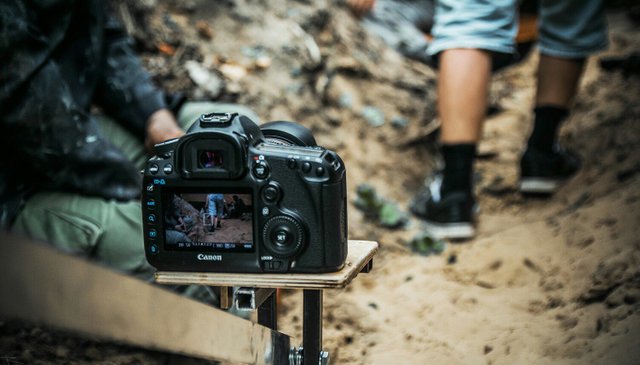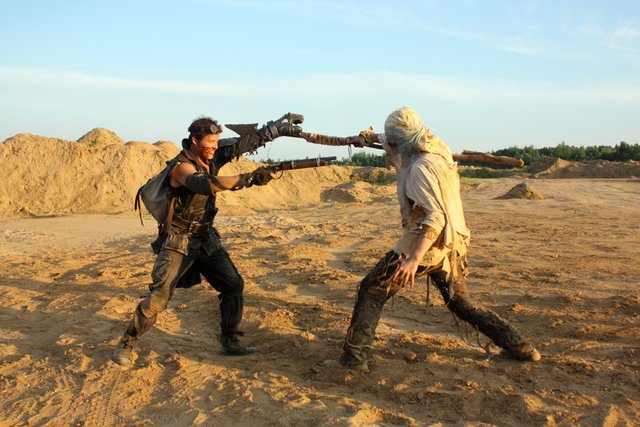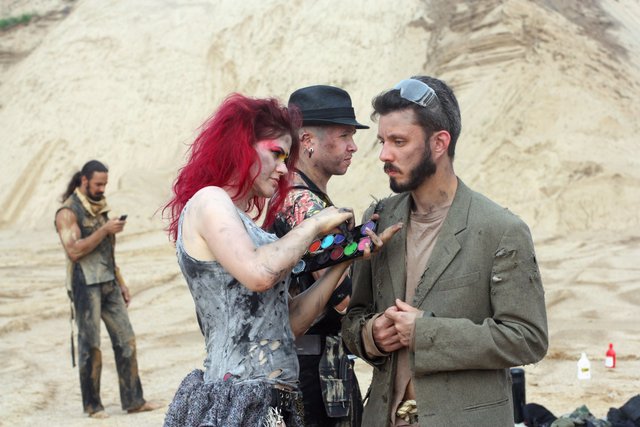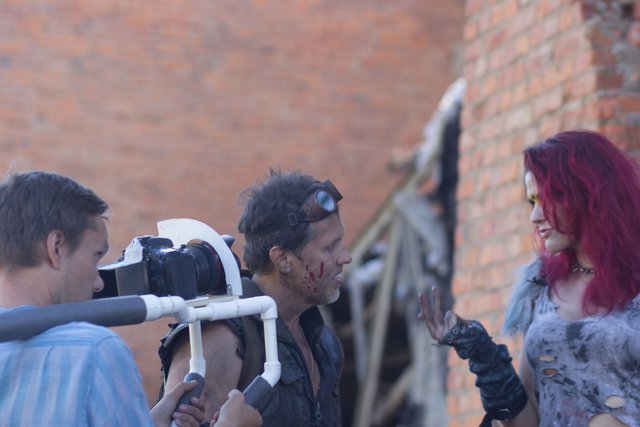How to make a movie - part2
Now let us switch to the twists in the plot. You have paid attention to the fact that most Western films are comprised of the following components:

getting acquainted with the characters and occurrence of events for framing their peculiar features (a villain shows his cruelty, a hero convinces us of his sword blade play, etc.);
starting point (we are told and openly shown which problems the characters will come across);
overcoming the first difficulties on the way to the goal – with a various level of achievement;
revealing the nature of the characters through the pause or with the help of comic or tragic situations;
coming across difficuleits, which are hard to overcome; however, all these are overcome in the long run;
down time before the final battle (solving problems): the theme of revealing of the characters' nature steps forward and their evolution is shown;

a final battle: facing the unsolvable problems;
a moment of despair or death of secondary characters (false defeat)
the main character pulls himself up, evolutionizes and overcomes all difficulties (conquers his enemies).
Achievement of the super goal of the character (the moral).
As a rule, you will find a similar pattern in the movies of all genres – from the «heroic» ones to comedies. We cannot say it is not efficient. It is good. And the box office takings prove this. However, it is quite dull and standard. Nevertheless, you very well may derive from it the general pattern for your plot. Or rework it completely. Because we are making auteur cinematography. And now you will ask me how to write an interesting story.

There are three ways to do this. But they are unknown. It’s a joke, of course.
So:
You have to align scenes in such a way so that the character moves to his global goal. PERMANENTLY. There should not be any material filmed for the sake of the action or demonstration of skills of a graphic designer. All should revolve around our character. An excellent example is nature in the «Revenant”. The mountains, the forest, and meteor shower – all this is the framing of the story of the main character.
It makes sense to flip the script from time to time. Don't be scared of this. (Remember the incredible series “Westworld”. When it turned out that we are watching the action in various time flows. Or the «Fight Club” with its double spiral of the head). There may be several 180 degree turns during the time of the movie but do not overdo it.
Puzzles. Scatter puzzles as a seeder and make sure you leave for the spectator an opportunity of thinking them over. It is even better not to solve a couple of them in the end. David Lynch knows all about it.
Texture. If you are writing a drama on long distance truckers, make sure you know enough details of their lives. Otherwise, professionals will watch your movie and laugh while ordinary spectators will smell a rat. If your main character is, for instance, a maniac, take the trouble to read a textbook on criminology and psychology. To put it short, details are important.
Several pieces of advice. Reread your wonderful scenario and rewrite it. It is really worth doing. And this is normal. Subject your story to the following test. Write a logline for it. Logline is a short statement of your scenario in two-three sentences which will be able to attract attention of the spectactor and His Majesty producer. And now ask yourself a question. Would you go and watch your movie having seen such a logline? If no, get back to your keyboard. Rewrite your scenario. Or the logline. (How to write a logline? It's a topic for an individual article, Ladies and Gentlemen). Read and reread the articles by famous stage directors. As well as screenwriting textbooks. I do all this on a permanent basis.

Results. You have created a script. All is well. You have started looking for actors for this role. If suddenly a talented actor is able to persuade you that the character should look other way, it makes sense to listen to him.
And this is how you should treat advice in general. Everyone at the filming location – from the lighting operator to the crowd – will tell you what you should change or improve in a scene they know about (may I remind you we are talking about the amateur cinema). Your task is listen to all this without getting irritated and say: “I will think about it…” 90% of what has been suggested you have thought over earlier and rejected due to specific reasons. However, 10% can really improve your scene.
Work with people is an individual topic for a conversation.
That’s all for now. And next time we shall tell you about how to arrange a shooting in a right way.
All photos are taken by me for the project
to be continued...
The first article: https://steemit.com/busy/@ondantr/how-to-make-a-movie
My project in the web:
Site: http://fidelfilm.ru/
Intagram: https://www.instagram.com/lastvegasfilm/
Facebook: https://www.facebook.com/sixlastvegas/
Youtube: https://www.youtube.com/channel/UCkC8NsDJaEX4L0YblWqjtQQ
Vk: https://vk.com/vegas_film
I'm really looking forward to seeing your movie! You've got a lot of good points here. By the way, I love that PVC camera rig. ;)
Thank you. I and my group are beginners. But we try to learn and do everything for the best picture. All our devices for image stabilization were made of materials sold in construction stores :))))
That's amazing! I just looked at your YouTube channel and the material looks really great. Like I said, looking forward to seeing the movie. :)
I think until the end there are two or three months :)
You got a 9.14% upvote from @allaz courtesy of @ondantr!